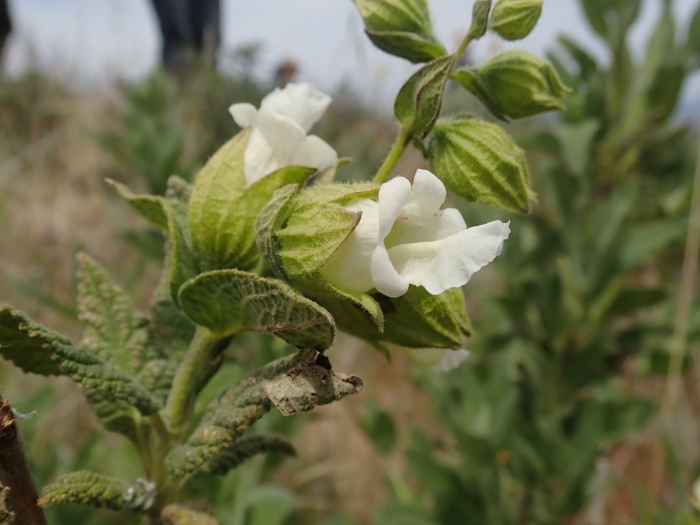Woodbalm
(Lepechinia calycina)
Woodbalm (Lepechinia calycina)
/
/

joergmlpts
CC BY 4.0
Image By:
joergmlpts
Recorded By:
Copyright:
CC BY 4.0
Copyright Notice:
Photo by: joergmlpts | License Type: CC BY 4.0 | License URL: http://creativecommons.org/licenses/by/4.0/ | Rights Holder: joergmlpts | Publisher: iNaturalist | Date Created: 2018-05-05T12:41:10-07:00 |

















































Estimated Native Range
Summary
Lepechinia calycina, commonly known as Woodbalm, is an evergreen subshrub or shrub native to the chaparral and oak woodlands of California, particularly in the coastal ranges and the Sierra Nevada foothills. It typically grows to a height and width of 6 feet (1.8 meters), with a rounded and somewhat open form. The plant is characterized by its aromatic leaves and spikes of tubular white to pale pink flowers that bloom in late spring to early summer, attracting hummingbirds and beneficial insects.
Woodbalm is valued for its drought tolerance, fragrant foliage, and attractive flowers. It is used in cultivation for habitat restoration, native plant gardens, and as an ornamental in xeriscaping. It thrives with minimal care once established, making it suitable for low-maintenance landscapes. While it prefers full sun to part shade, it is adaptable to various light conditions. Woodbalm requires well-drained soils and is tolerant of different soil types, from sandy to loamy. It is generally free from serious pests and diseases but can be affected by root rot if overwatered.CC BY-SA 4.0
Woodbalm is valued for its drought tolerance, fragrant foliage, and attractive flowers. It is used in cultivation for habitat restoration, native plant gardens, and as an ornamental in xeriscaping. It thrives with minimal care once established, making it suitable for low-maintenance landscapes. While it prefers full sun to part shade, it is adaptable to various light conditions. Woodbalm requires well-drained soils and is tolerant of different soil types, from sandy to loamy. It is generally free from serious pests and diseases but can be affected by root rot if overwatered.CC BY-SA 4.0
Plant Description
- Plant Type: Subshrub, Shrub
- Height: 6-8 feet
- Width: 4-6 feet
- Growth Rate: Moderate
- Flower Color: White, Purple
- Flowering Season: Spring
- Leaf Retention: Evergreen
Growth Requirements
- Sun: Full Sun, Part Shade
- Water: Low, Medium
- Drainage: Medium, Fast
Common Uses
Bee Garden, Bird Garden, Border Plant, Butterfly Garden, Deer Resistant, Drought Tolerant, Fragrant, Hummingbird Garden, Low Maintenance
Natural Habitat
Chaparral and oak woodlands of California, particularly in the coastal ranges and the Sierra Nevada foothills
Other Names
Common Names: Pitchersage
Scientific Names: , Lepechinia calycina, Sphacele calycina, Sphacele blochmanae, Lepechinia calycina var. wallacei, Sphacele calycina var. glabella, Sphacele calycina var. wallacei, Sphacele gracilis, Lepechinia calycina var. glabella, Alguelagum calycinum
GBIF Accepted Name: Lepechinia calycina (Benth.) Epling